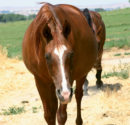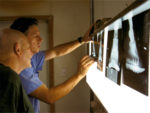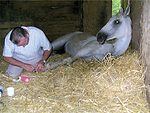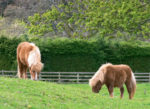Advertise Follow Us
Lamenesses
Technology Focus
Diagnostic Imaging For Lameness
Clinicians describe the use of X-rays, venograms, ultrasound, and MRIs for tough foot-pain cases
Read More
Managing the Laminitic Horse
Practical and medical tips from a Florida laminitis conference
Read More
Laminitis Puzzle in the Spotlight
Florida conference tackles laminitis and other foot problems
Read More
Wedge Pads Prove Effective For His Navicular Cases
Oklahoma vet says simple shoeing combination has an impressive track record of success
Read More










